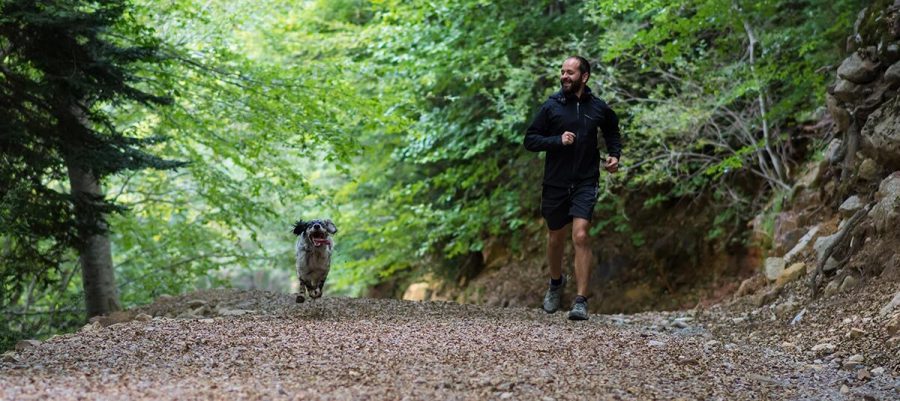Two legs… and four paws: you love your pet, maybe having little time to take him out for a run, but you can opt for a little healthy jogging with your best friend: a great opportunity for having fun and sharing moments with your puppy.
Running with the dog is a great fun experience, but good behaviour is important, and a good education that allows your dog to be protected from dangers and not cause trouble, for yourself or others.
Running with the dog: what you should know
First of all, there are rules that serve to safeguard your best friend’s health. Running is not suitable for all breeds: perfect for mongrels, who are cheerful and lively, ideal for greyhounds, but not recommended, for example, for dogs with laboured breathing and delicate cardiocirculatory systems, such as Pugs, Boxers, and Bulldogs. Also, consider the puppy´s size: molossers, for example, after repeated jerking movements, may suffer from hind feet problems, as they are naturally predisposed to dysplasias. No problem for Labradors, Golden Retrievers and German Shepherds!

How to run with the dog
Getting him used to it gradually is the basic rule: for the dog, running is a highly playful activity, both energetic and joyful. Early on it will try to overcome you, will cling to the leash, or tend to pull it away. It’s better, then, to educate it… step-by-step:
- First, let’s start with walking. The dog will have to stay by your side, as in a normal walk;
- Then, start to speed up the rhythm a little bit, as if you´re doing a march. If your friend starts trying to overtake you, or speed up the running pace even more, you can control it with a decisive “slow down!”, slightly pulling the leash;
- When the dog realises that it will have to follow your rhythm, you could accelerate and start running, continuing following the indications above. Your four-legged friend may be too vivacious for running! Stop every time that it tries to pull and go too fast.
- Don’t be hasty: your dog will need some time to understand that it is a controlled activity, and not a free run, as it would, for example, do at the park. Try to take it with you as much as you can, and be patient, especially if your dog is young: they will always want to play a lot.
The dog and the run: what else do you need to know?
It’s really important that your four-legged friend has all the vaccinations, especially the one against filaria, and that it is protected by the antiparasitic best suited to it, to prevent it from being attacked by ticks, fleas and sandflies. Running with the dog in open spaces, in the countryside or in parks, can be the perfect time for pest attacks.

Running with the dog: the right leash
You already know that choke collars aren´t the solution: the running dog must be free in his movements, feeling confident that the owner will not suddenly hold it back. An “H-style” harness is better, which gently embraces the back and rib area, allowing ideal freedom of movement for your best friend. Simply attach the usual collar to the harness, which you also use during walks.
Share everything, even jogging with the dog: every opportunity is good to find a moment to be together with your best friend! The run will stimulate him, make him more docile and, above all, allow him to burn calories, stimulating his cardiocirculatory system.
One last tip: Kippy EVO, the GPS locator for cats and dogs, with Activity Tracker, lets you check on your best friend during physical activity. You’ll see its calorie consumption and running rhythm on the app that you can download on to your mobile device.
